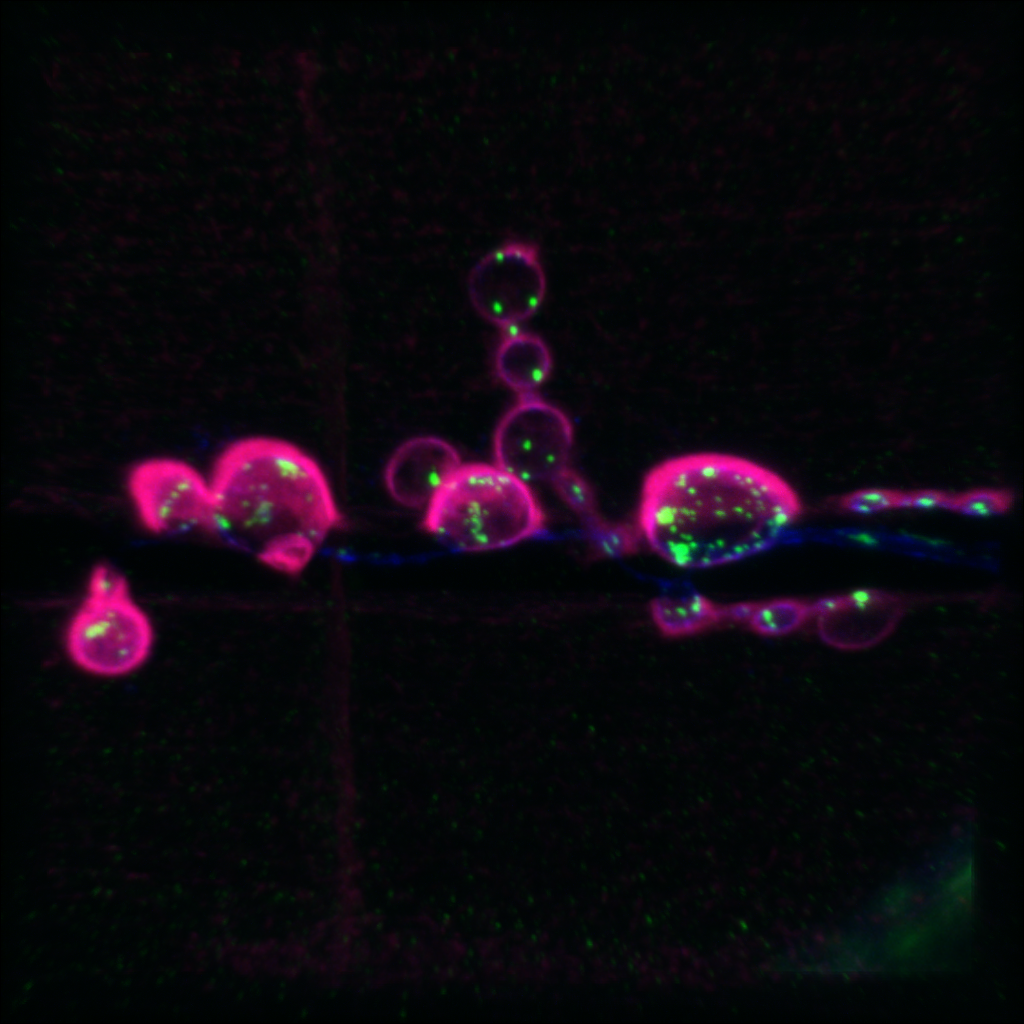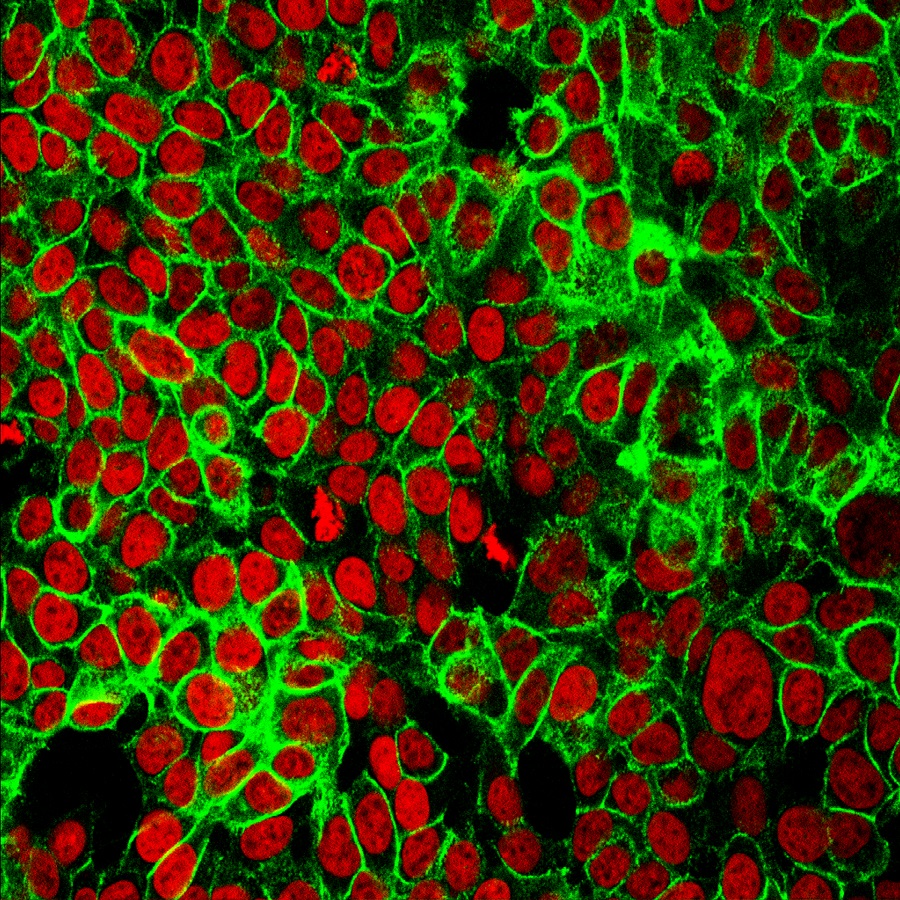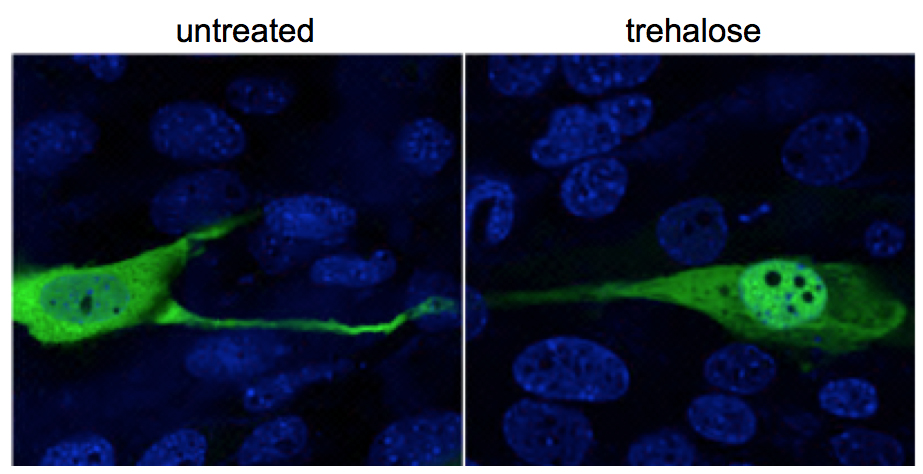Image of the Month: Neuron-muscle synapses in the fruit fly

Certain human gene variants of ATAD3A can cause rare neurological syndromes characterized by global developmental delay, low muscular tone and visual, neurological and heart problems. The association between gene variants of ATAD3A and the neurological conditons was established using a combination of patients’ whole-exome sequencing studies led by Dr. Tamar Harel and Dr. James R. Lupski, and evaluation of the human gene variants in the Drosophila laboratory model. Human variants of ATAD3A are associated with a lower number of mitochondria while the gene equivalents in the fruit fly cause a reduction in the number of mitochondria. This and other studies show the importance of the Drosophila model in finding the genetic causes of human conditions.

The laboratory of Dr. HugoBellen focuses on investigating neuronal communication and maintenance, developing tools to control transcript and protein levels in adult neurons to assess which proteins are required for neuronal function and survival, and creating genome-wide libraries to manipulate genes in vivo. The Bellen lab uses Drosophila melanogaster as a model system because most biological processes are evolutionarily conserved and studies in fruit flies provide many important clues about the aging process in animals and humans.



